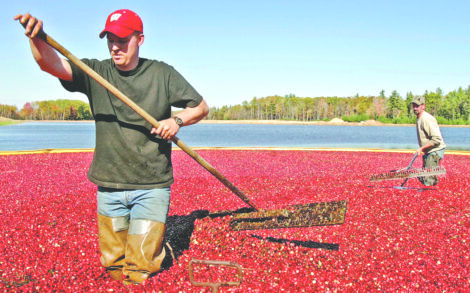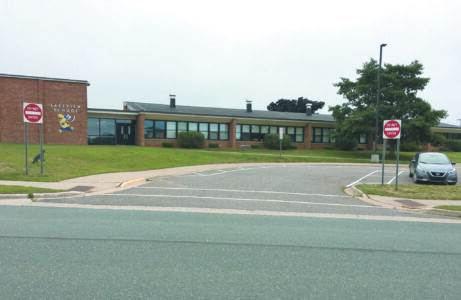Historically speaking
Fire at Cliffs Shaft

The Cliffs Shaft headframe is pictured. (Courtesy photo)
“If anything more was needed to show it is high time that something was done for the improvement of our water supply, the fire at Cliffs shafts, Wednesday supplied the evidence. At this time the city mains failed to give a fire pressure or anything approaching it, and but for the fact that the mining company had its own department and Lake Bancroft to draw from there would have been a serious tale to tell. For some months past Superintendent Devine and the board of public works have been calling attention to the condition of the supply and have been suggesting remedies.” (Iron Ore, Aug. 3, 1901)
The water system in Ishpeming was about a decade old, but water meters had yet to be installed, maybe due to the cost. All residences using water were charged a water tax which varied according to the number of rooms, but that system wasn’t working well as there were some heavy consumers of water. The matter was also addressed in a special meeting of the common council on July 29.
“A year ago last spring the board suggested to the common council that the use of meters in the case of large consumers might remedy the difficulty, and the mayor, Mr. Braastad, mentioned this suggestion in his inaugural address with approval. Since that time your board has investigated the question of the cost of meters and the saving of water brought about by their use and are unanimously of the opinion that with the use of meters, especially by large consumers, the present supply of water would be rendered ample to supply the real wants of the city. The present system is both wasteful and unjust, while one consumer carefully husbands the water and uses only what is necessary, his next door neighbor keeps the water running from morning until night into the sewer and prevents his economical neighbor from receiving the amount of water he actually needs.” (Iron Ore, letter to common council, Aug. 3, 1901)
The fire that precipitated the discussion on water meters was the crusher fire at Cliffs Shaft.
“The big crusher building (located where the C shaft is now) at the Cliffs Shaft mine of the Cleveland-Cliffs company caught fire yesterday morning at a few minutes before 12 o’clock, mining time. The damage to the building, machinery, etc., will amount to at least $5,000. The loss is covered by insurance.
The fire broke out on the second floor, south side, where the crusher proper is located. The man who oils the machinery was in there and as he turned to go away the smoke caught his eye. Looking more closely, he saw a heavy flame running up the side of the wall. He immediately gave the alarm, which was sounded by the blowing of the whistle at the engine house, but before the crusher crew could get water on the fire it had climbed to the top story. The center portion of the building was pretty well saturated with oil from the machinery. This furnished excellent fuel for the fire and within a couple of minutes, the entire upper part of the structure was burning fiercely.
The fire department responded promptly. It was necessary to get out one of the steamers, as the pressure on the water mains was not sufficient to send the water to the top of the building. The steamer was stationed at Lake Bancroft, about five hundred feet from the crusher, and soon three streams were being thrown on the burning building.” (Mining Journal, Aug. 1, 1901)
Other ways of increasing the supply of water were examined.
“It has been suggested by some that the Carp river be tapped to furnish water for the city. This would entail an expense of about $40,000 with pipeline, pumping station, etc. Analyses of the water suggest that it is pure and wholesome. It would be necessary to build a dam, but the point at which this should be put in was once the site of a slaughterhouse. It would be necessary to take away the surface to a considerable depth in order to make the bottom free from any dangerous germs that might be the result of former operations here. This could no doubt be satisfactorily done, and it would present an unfailing flow of water.
Another suggestion is that the Carp river be used for the mines alone, permitting the balance of the city to use the Lake Sally supply, of whose purity there is no question.
One mining man says he is willing that the mines look after their own supply. He says each mine lifts much more water daily from their levels than would be necessary to supply their boilers and all other purposes unless it were for drinking.” (Iron Ore, August 3, 1901)
The adoption of water meters would be carefully studied by the common council and others. But one fact remained clear.
“There is a difference of opinion concerning meters, but it stands to reason that they will save the city a great amount of water annually. They will have the same effect upon consumption that the meter has on the gas line. That there is a great waste all concede, and that it will continue until some proper plan has been determined upon is certain. The posting of notices and passing of ordinances has no effect. The meter will do the business, for every family in town will immediately begin economizing on the use of water once the meter is introduced.
It isn’t a question of income, but one affecting the city’s safety.” (Iron Ore, Aug. 3, 1901)
EDITOR’S NOTE: This narrative will be continued in two weeks.


